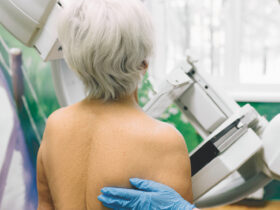By Kathy V. Verdes, APRN, A-GNP-C
Stem cell therapy for vaginal rejuvenation represents a groundbreaking advancement in regenerative medicine, offering new possibilities for women experiencing various gynecological concerns. This innovative treatment approach harnesses the regenerative potential of stem cells to address both functional and aesthetic concerns related to vaginal health. As the field of regenerative gynecology continues to evolve, understanding the science, applications, and implications of this therapy becomes increasingly important.
The emergence of stem cell therapy in vaginal rejuvenation stems from the remarkable ability of these cells to promote tissue regeneration and cellular repair. Stem cells are undifferentiated cells capable of developing into various specialized cell types, making them valuable tools in regenerative medicine. In the context of vaginal rejuvenation, these cells can potentially regenerate vaginal tissue, enhance blood flow, and improve overall vaginal health.
The primary sources of stem cells used in vaginal rejuvenation typically include autologous adult stem cells, particularly those derived from adipose tissue or bone marrow. These cells are harvested from the patient’s own body, minimizing the risk of rejection or adverse reactions. The harvested cells undergo processing and concentration before being carefully reintroduced into targeted areas of the vaginal tissue.
The therapeutic mechanisms of stem cell therapy in vaginal rejuvenation operate through multiple pathways. When introduced into the vaginal tissue, stem cells release growth factors and cytokines that stimulate local tissue repair and regeneration. They promote angiogenesis (formation of new blood vessels), enhance collagen production, and support the development of healthy vaginal epithelium. This comprehensive approach addresses various aspects of vaginal health simultaneously.
Clinical applications of vaginal rejuvenation stem cell therapy extend to several conditions and concerns. Women experiencing vaginal atrophy, particularly post-menopausal women, may benefit from this treatment as it can help restore vaginal thickness and improve natural lubrication. The therapy has shown promise in addressing stress urinary incontinence by strengthening the supporting tissues of the urethral sphincter. Additionally, women who have experienced childbirth-related trauma or age-related changes may find relief through this regenerative approach.
The procedure typically involves several steps, beginning with a thorough medical evaluation to determine candidacy. The stem cell harvesting process is performed under local anesthesia, followed by cell processing in a specialized laboratory. The prepared stem cells are then administered through precise injections into specific areas of the vaginal tissue. The entire procedure usually takes a few hours, and patients can typically return to their regular activities within a few days.
Research findings regarding the effectiveness of vaginal rejuvenation stem cell therapy have been encouraging, though long-term studies are still ongoing. Early clinical trials have reported improvements in vaginal tissue quality, enhanced natural lubrication, and better sexual function in treated patients. Some studies have also noted positive outcomes in treating stress urinary incontinence and vaginal atrophy symptoms.
Safety considerations remain paramount in the implementation of this therapy. While the use of autologous stem cells minimizes many risks, potential complications can include temporary discomfort, mild swelling, or infection at the injection sites. Proper patient screening, sterile technique, and adherence to established protocols are essential for optimal outcomes and safety.
The future of vaginal rejuvenation stem cell therapy appears promising, with ongoing research exploring new applications and refinements to existing techniques. Scientists are investigating the potential use of different stem cell sources and delivery methods to enhance treatment effectiveness. Additionally, combination therapies incorporating stem cells with other regenerative treatments are being studied to potentially optimize outcomes.
Despite the encouraging developments, it’s important to note that vaginal rejuvenation stem cell therapy is still considered an emerging treatment option. Patients considering this therapy should consult with qualified healthcare providers who can provide detailed information about the procedure, expected outcomes, and potential risks. The decision to undergo treatment should be based on individual circumstances, medical history, and realistic expectations.
As research continues and technology advances, vaginal rejuvenation stem cell therapy may become an increasingly important option in regenerative gynecology. This innovative approach offers hope for women seeking natural, long-lasting solutions for various gynecological concerns. However, continued scientific investigation and clinical trials remain essential to fully understand the long-term implications and optimize treatment protocols for maximum benefit and safety.
KATHY VERDES APRN, A-GNP- C
Kathy earned her Master’s in Nursing Degree from Kaplan University in 2017. Kathy is certified by the American Academy of Nurse Practitioners (AANP) as an Adult- Gerontology Primary Care Nurse Practitioner (A-GNP-C). Prior to her Advanced Practice Registered Nurse Degree (APRN), Kathy managed a weight loss clinic for over 6 years right here in Naples. Kathy has since then managed acute and chronic care illnesses in different settings, and she genuinely enjoys spending time with her patients.
Are you ready for a consultation?
Your treatment will be performed by a Certified Nurse Practitioner. Schedule your appointment now!
7385 Radio Road; Ste., 104, Naples FL 34104
(239) 384-9392
www.Naples-Clinic.com








